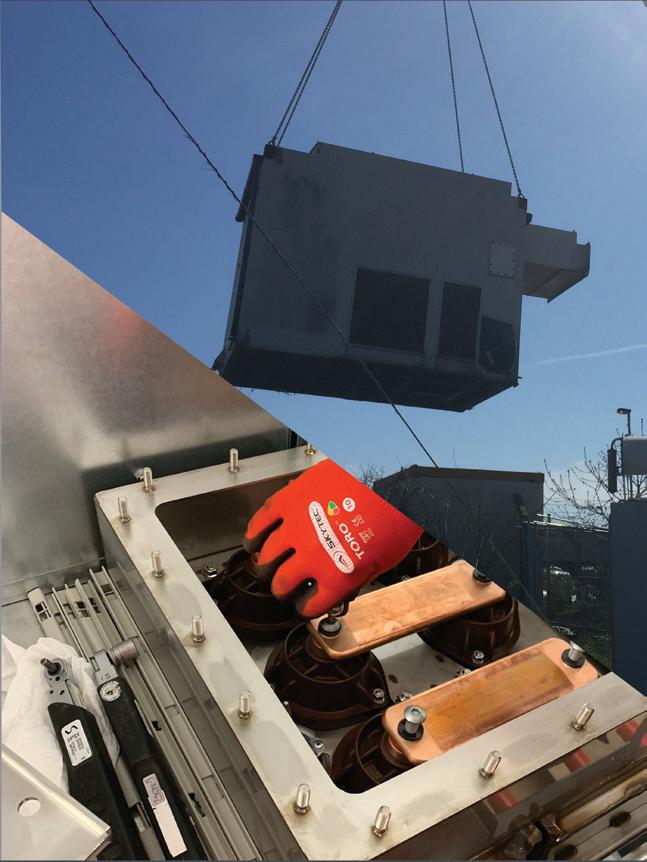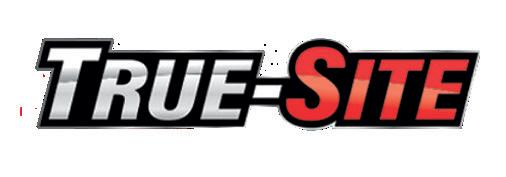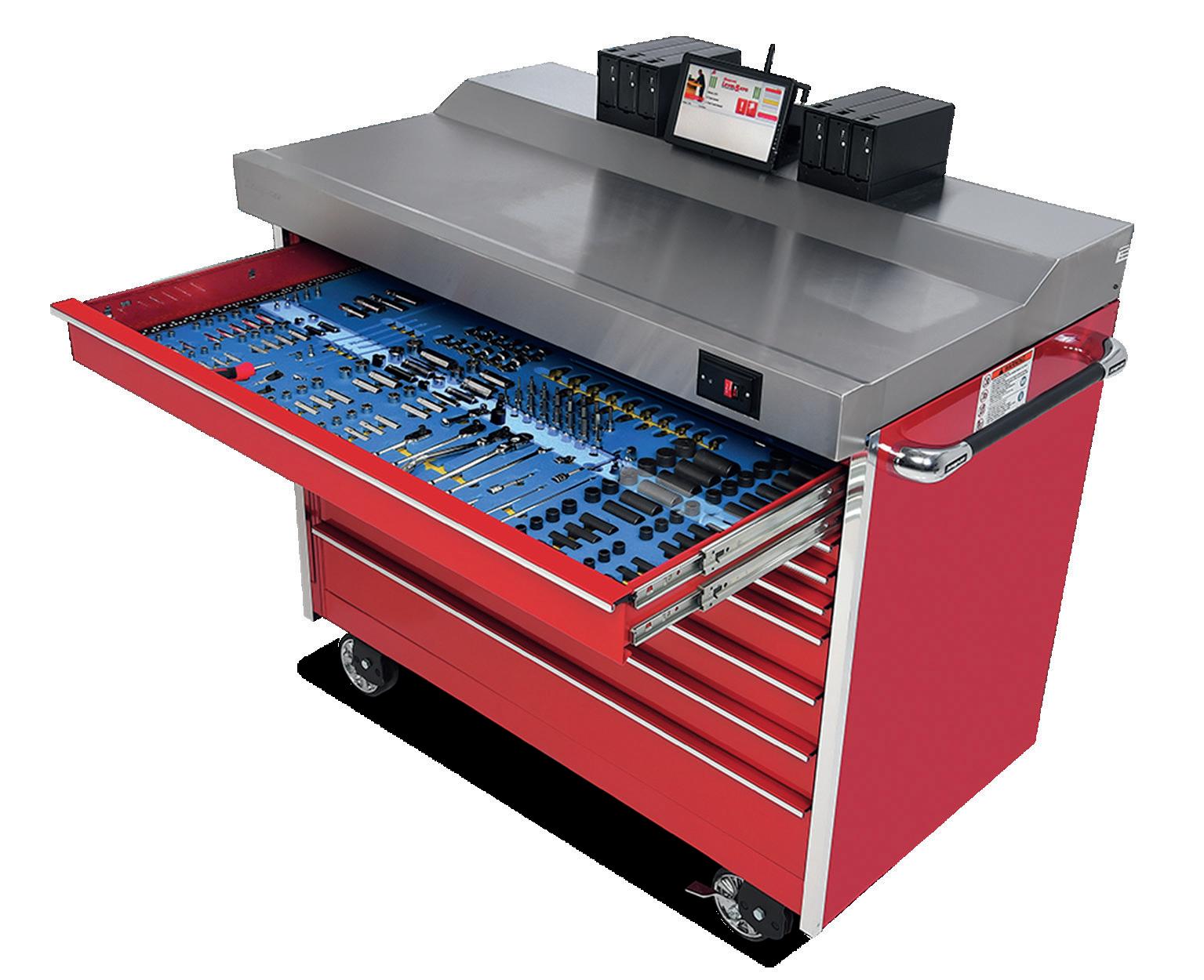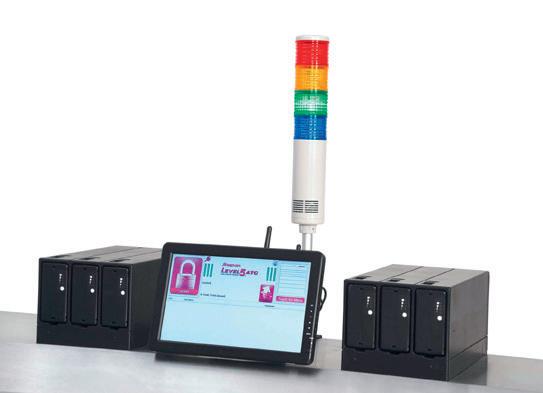
8 minute read
Viewpoint
Delivering a net zero ready rail system
John Downer, Rail Market Director at Jacobs looks at the pivotal role that the UK rail industry can play as we prepare to deliver a net zero ready transport system
In 2018, greenhouse gas emissions from rail (passenger and freight) made up just 1.4 per cent of the UK’s domestic transport emissions, but rail made up ten per cent of all passenger miles travelled. Shifting an extra four per cent of those passenger movements and four per cent of freight movements onto rail from other modes would save more carbon than the rail sector’s current total emissions, as the Railway Industry Association recently reported in its Why Rail Electrification report.
Rail has embraced its part in meeting the UK’s 2050 net zero target, e.g., removing diesel powered trains by 2040. But if you see this through the passenger lens – how much do passengers truly understand the carbon impact of their journey choices? The far bigger prize here is that four per cent+ modal shift, but we must electrify rail before road transport is significantly electrified and maintain rail’s position as a more sustainable (less particulates, lower material use per kilometre travelled), passenger focused (comfortable, less congestion stress) and efficient mode of transport.
With the range of solutions in circulation that can create a net zero ready rail system, the focus must move to ‘enabling decarbonised delivery’ rapidly to maximise the opportunities.
Let’s explore the challenges underlying a few of these questions.
We think there are seven pertinent questions that are central to thinking why and how to enable decarbonised delivery:
1. How can we decarbonise the railway without compromising passenger experience? 2. How can we minimise disruption to services? 3. How can we link rail into existing and new modes of transport as part of a system wide approach to transport decarbonisation? 4. How do we make decisions in the short term that will produce the best outcomes for a net zero world? 5. How do we use rail to improve air quality, especially in stations that are within air quality management zones? 6. How do we reduce noise pollution from rail, especially freight? 7. How do we design, create and deploy railway infrastructure that is ready for the climate of the future whilst still operating safely and comfortably? Putting passengers first and supporting connections I believe we can increase passenger numbers by enhancing their experience and helping them understand the carbon impact of their journey choices. Electrification brings schedule benefits and more trains of better quality. We need low carbon journey planning apps that partner the train with active travel/bus/electric vehicle-enabled ‘last mile’ journeys to offer and inform passengers ways of making end-to-end low carbon journeys.
On a ‘putting passengers first’ review for the Ely Area Capacity Enhancement scheme, our insights identified an additional yearly net carbon saving based on rail freight versus road. Multiplied over a five-year period (noting the benefits will keep on accruing over decades), this will decarbonise the scheme by 113,000 tonnes of carbon by removing 212,000 lorries from the road, along with community benefits from traffic reduction (even when HGVs are no longer diesel powered from 2040).
Whole system thinking The most cost and carbon efficient choice of power supply is undoubtedly electric. And this needs to encompass the whole railway system, including vehicles, infrastructure, power supply and operations. We’ve been working the immense challenge of power supply resilience to enable a passenger focused train performance outcome on the East Coast mainline since 2014 through the Rail Electrification Alliance (REAL). The opportunity that bringing together track and train through Great British Railways creates could ensure the whole system thinking, planning and execution prevails for electrification in a smarter way than we have seen before.
When a vehicle specified and procured right now will be expected to remain in service beyond the net zero target year 2050, and we’re only scratching the surface of long-term electrification planning (Scotland aside), we face a decarbonisation dilemma. So, how do we make rolling stock investment decisions today when we are so poor at forecasting change, amplified by the uncertain operating environment.
The Transport Decarbonisation Plan and Sustainable Rail Strategy have arrived; each providing hope for whole system decarbonisation thinking through the principles they establish for the future of integrated travel, and the detailed integrated implementation plans they require.
Low embodied carbon infrastructure Cross rail industry collaboration is vital to create a consistent demand for low carbon products. By setting out clear ambitions for carbon reduction when procuring infrastructure, the supply chain is given a clear direction to encourage investment for low carbon alternatives. The industry must collaborate to make product acceptance, and the ability to challenge standard design processes for new products shorter and easier.
This will produce more case studies for the use of low carbon materials, like the visually stunning and collaboratively designed FLOW bridge, unveiled at Rail Live, which my colleagues provided the technical expertise on fibre reinforced polymers on, minimising unnecessary over-design and specification. Greater progress faster can be made if we develop and refine the process for accepting and introducing new technologies to the railway, which FLOW proved you can do.
Through approaches like design-out waste and decarbonisation challenge workshops and design reviews, collaboration has been essential to embedding proactive decarbonisation as part of the TransPennine Route Upgrade’s wider integrated sustainability strategy, for example.
Keep these seven questions to hand when you are making choices to ‘enable decarbonised delivery’ – as this is going to need active testing and piloting of new, holistic approaches to the way services are procured and planned, and re-framing business cases to consider and prioritise better, greener outcomes, including enhancing passenger experience to increase passenger numbers. Taking the premise that road and rail will be net zero at some point in the future, the choice of using rail will become more about broader sustainability, social value and passenger experience benefits.
John Downer is Rail Market Director at Jacobs




ORGANISATION VISIBILITY ACCESS CONTROL
ASSET MANAGEMENT AUTOMATION
KEEP PRODUCTIVITY ON TRACK
When critical industry processes and concerns require the elimination of lost tool issues, the solution is to minimise human error. Let Snap-on ATC handle the control and tracking automatically
CUSTOMER BENEFIT
• Standardise Work • Improve Productivity • Control Inventory • Reduce Losses • Control FOD • Improve Security • Audit Trail • Increase Accountability • Oversight Prevention • Calibration and
Maintenance Reminders
PRODUCTS AND SERVICES
• Automated Tool Control Box • Automated Tool Control Locker • Value Add: Networking
AUTOMATED TOOL CONTROL

With advanced digital imaging technology and proprietary software, Level 5 Automated Tool Control System (ATC) scans the tool drawer and records which tools are removed and replaced in real time. You know where everything is at all times without your techs being slowed down for a second. The system also knows when tools are broken, allowing you to replace or repair them right away. It’s tool control that works hard to keep your techs working at their best.

ATC BOX
• No individual scanning required • No RFID tags to install • No limitations on tool size - if it fits in the drawer, it works • Optional polyurea elastomer coated top vs. stainless steel
WORKS WITH
snapon-industrial.co.uk snaponlevel5.com

WORKS WITH

ATC LOCKER

• Track irregularly shaped items like extension cords, tools kitted in plastic or fabric carrying cases, personal protective equipment and more • Track serialised items like torque wrenches, multimeters or micrometers • Fully networkable – connects to Level 5™ administrative interface • Recharge while storing power tool
ALL THE ACCESSORIES YOU NEED
• FastFlag™ adds status display lights • ZoomID™ gives you the ability to track serialised, certified and calibrated assets in the ATC Box

ZoomIDTM
FastFlagTM

Tel: 01536 413 904 industrialuk@snapon.com
FEATURES & BENEFITS
CONVENIENCE
• Intuitive touchscreen interface • Audible voice confirmation of tool removal and replacement • Automatic locking • Errors announced and displayed for incorrect tool position • 10.1” widescreen, 16:9 LED, resistive touchscreen • Dual wireless antennas for improved connectivity • Hardware – 64-bit processor with 8GB RAM
POWERFUL ADMINISTRATIVE SOFTWARE WITH REAL TIME REPORTING
• Comprehensive analysis, reporting, and inventory tracking can be performed from administrator workstations located anywhere on the network in real time • Reports are fully customisable and exportable to Excel or PDF • Registers transactions in real time – both at the box and between the box and the admin client • Real time communication includes email alerts when tools are used, when calibration is required, when tool status changes and lost or broken events
STATE-OF-THE-ART BATTERY POWER
• 16+ hours of battery run-time; 30 minutes of backup power for uninterrupted power supply • Snap-on rechargeable batteries feature state-of-the-art circuit protection that prevents overload
SPECIFICATIONS
• 1 year electronics warranty • Extended warranty available • Unlimited number of assigned users • Networking through Ethernet or wireless • 1 copy of ATC software required for each administrator










